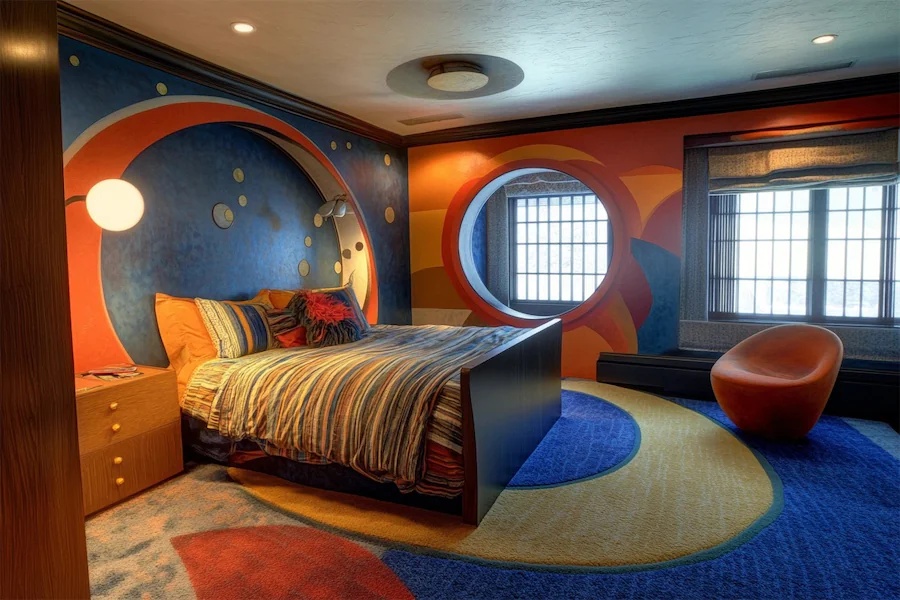Designing an Art Deco-inspired kid’s room merges the opulence of the 1920s with playful elements suitable for children. This style is characterized by bold geometric patterns, rich colors, and luxurious materials, creating a space that is both stylish and engaging.
Introduction to Art Deco Kid Rooms
Art Deco, short for Arts Décoratifs, emerged in the 1920s and is known for its emphasis on geometric shapes, vibrant colors, and lavish ornamentation. Incorporating this design into a child’s room introduces a unique blend of sophistication and fun, fostering an environment that stimulates creativity and imagination.
History and Origins of Art Deco Design
Originating in France, Art Deco became a prominent design style influencing architecture, interior design, fashion, and art. It represented luxury, glamour, and faith in social and technological progress. The style is marked by the use of materials like chrome, glass, and exotic woods, combined with symmetrical and repetitive patterns.
Key Features of an Art Deco Kid Room
- Color Palette: Utilize rich and vibrant hues such as deep blues, emerald greens, and bold pinks. These can be balanced with neutral tones to prevent overwhelming the space. For instance, pairing bubblegum pink with vibrant blue brings a charming aura to the room.
- Geometric Patterns: Incorporate bold geometric designs through wallpapers, rugs, or bedding. Patterns featuring hexagons, chevrons, or fan motifs are quintessential to Art Deco and add visual interest.
- Furniture: Select pieces with sleek lines and glossy finishes. Mirrored surfaces or lacquered woods are ideal. A queen-size bed with a brown tufted headboard or a 4-door peach and white swing wardrobe can serve as statement pieces.
- Lighting: Opt for statement lighting fixtures such as chandeliers or sconces with brass or chrome finishes. These not only illuminate the room but also serve as decorative elements that enhance the Art Deco aesthetic.
Applications of Art Deco Design in Children’s Spaces
- Wall Murals: Murals are becoming a popular interior design choice, adding creativity and personality to a space. Unlike temporary wallpapers and decals, murals provide a more permanent feature, often compared to a tattoo. Designers are using murals to create unique, story-driven spaces, making them an excellent choice for a child’s room.
- Play Areas: Incorporate geometric rugs and patterned cushions to create a cozy and stylish play area. A round wooden side table with drawer storage can serve as a functional and decorative piece for activities.
- Storage Solutions: Use sleek, built-in wardrobes or dressers with mirrored or glossy finishes to keep the room organized while maintaining the Art Deco style. A 4-door peach and white swing wardrobe with loft storage offers ample space for clothes and accessories.
Considerations When Designing an Art Deco Kid Room
- Safety: Ensure that all furniture and decorative items are child-safe. Avoid sharp edges and secure heavy pieces to the wall to prevent accidents.
- Personalization: Involve your child in the design process by allowing them to choose certain colors or patterns. This ensures the space reflects their personality and becomes a place they love.
- Balance: While Art Deco is known for its boldness, it’s essential to balance vibrant elements with neutral tones to create a harmonious and comfortable environment for a child.
Conclusion
An Art Deco-inspired kid’s room offers a unique blend of elegance and playfulness. By thoughtfully integrating geometric patterns, rich colors, and luxurious materials, you can create a space that is both functional and inspiring, providing a nurturing environment for your child’s growth and creativity.
